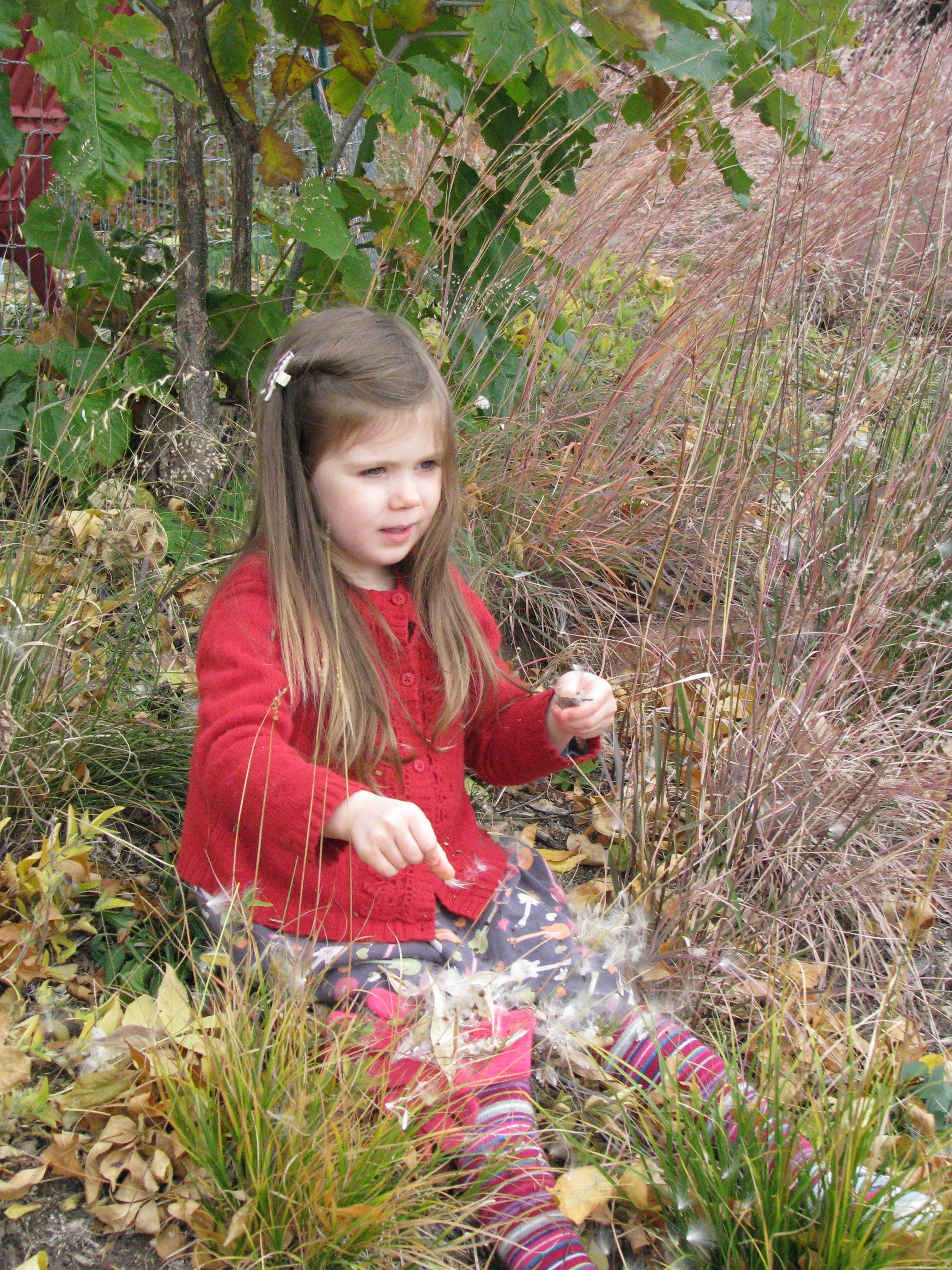There are many ways we can make our home landscapes more sustainable.
Some of these include:
-Supporting ecological systems - Utilizing plants that support animals and rich tapestries of life.
-Carefully managing stormwater to encourage infiltration onsite (to recharge aquifers) rather than contributing to flooding downstream.
-Using low impact equipment that is less damaging to the site and is also less polluting.
Choosing Appropriate Materials:
- Plants that are suited to the moisture & light conditions of the site, and can thrive with minimal additional care.
- Plants that provide sustenance for humans, or food & habitat for wildlife.
- Locally sourced hardscape materials that don't need to be trucked in from thousands of miles away.
Understanding Materials
A concrete subcontractor once jokingly told me he'd make three guarantees with his work: 1) it wouldn't blow away, 2) no one would steal it, and 3) it would crack. Concrete will always crack, but the true professionals know where to include control joints to keep the cracking from damaging the surface. A true concrete professional also understands the importance of preparing a great base for the concrete before pouring. That's where the hard work is and is a big reason for the differences we see in concrete contractor's pricing. Personally, in most situations, I'd rather install high quality clay pavers rather than concrete. They look nicer, and if there is any issue in the future, a paver patio is much more easy to repair than one made of concrete.
Designing for Longevity
Designing for an appropriate time frame is important. It's important that our designs will provide function for years to come if we want them to be sustainable. Many elements inour homes & landscapes are cheaply designed and are replaced far too frequently
Design for Disassembly/Reuse
I like building in a way that allows materials to be reused or repurposed in the future. Although we always try to provide a landscape that will last a lifetime, we realize that sometimes needs change, or a property is sold and new homeowners have different needs....Why not use materials that can be reused?
Understanding Needs
Sometimes clients asking for things they just don't need. I once met with a client who insisted he needed a 5' wide brick path to a simple fire ring in the back corner of his lot, after talking through his goals with him, we quickly discovered that providing a path could better be done by defining a path with plantings...not only was this solution much less costly, it also provided a great deal more beauty and function to the space. Besides, the fire ring was pretty crummy anyhow so building a nice brick walkway to it would've been very overstated.
Another client insisted he needed a 400 sf patio in his small back yard and another landscaper quoted him $18 a square foot to build it. I proposed that we really discuss his goals and analyze the site to understand how his site would function with the patio especially since there were slopes that would need to be addressed to construct the patio. I also recommended that he deal with some water related issues that were damaging his home before moving forward with the patio. I never heard from him again...he was focused on getting as big a patio as he could for as cheap as possible. I wasn't the right kind of landscaper for him.
Being Happy With What We Have
Most Green Industry practices really aren't that 'green' at all. The quest for the perfect lawn has led to large amounts of pesticide use, and the amount of energy dedicated to growing annual plants and manipulating environments to grow exotic species is astounding. I have absolutely no problems with lawns and annuals and some exotic plants, but think we are better off finding a more balanced approach. Thinking about what we need rather than simply 'keeping up with the Joneses'. If wildlife and clean water and etc are important to you, we can discuss how we can help meet these environmental needs. I realize that everyone has different needs and desires for their landscape, and when working together, I'll respect your goals and wishes.
Permaculture
My natural tendency with landscaping involves a respect for the land, a love of producing my own food, etc. When I was first introduced to the concepts of permaculture, I found it unfortunate that they had to make a special name for this type of gardening. I thought it should just be called "common sense landscaping." Unfortunately, many green industry practices defy common sense to such a large degree that creating a special name became necessary. I don't practice permaculture per-se but do many similar practices and enjoy listening to and learning from permaculture podcasts


